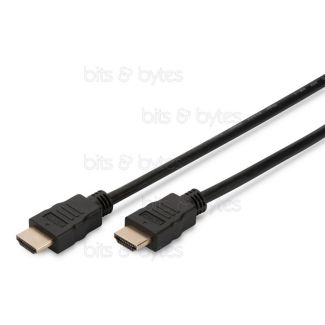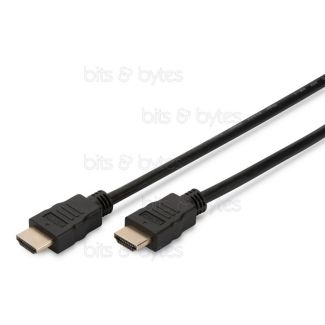HDMI stands for High-Definition Multimedia Interface and it is an interface for transferring uncompressed video and audio from an HDMI compatible device. HDMI is a digital replacement for an existing analog video like VGA, SCART, phono, etc...
What is HDMI?
Technically speaking, HDMI is a global connectivity standard developed by a consortium of major electronics manufacturers including Hitachi, Panasonic, Philips, Sony, Thomson, Toshiba, and Silicon Image. HDMI establishes a "future-proof" foundation for the transmission of high-definition video and multichannel audio among a wide variety of audio, video and computer products. Today, most companies have adopted the HDMI standard and are building HDMI into their products.
For you, this means that there is a high-quality, single-cable, for an all-digital solution you can use to interconnect all the components of your home entertainment system, regardless of manufacturer. And because HDMI is a two-way platform, it also means that your individual components can "talk" to each other, exchanging critical information that allows optimizations and adjustments to be made automatically for easy, trouble-free operation of multiple components.
Why should I use HDMI?
Simply, because it's the best and most convenient audio/video connection you can buy. For practical purposes, HDMI is also the only way you can experience 1080p "full HD" video in your home. This means that if you want to enjoy the full video potential of sources like Blu-ray players, HD TV boxes and HD DVD players, you must connect each of them with an HDMI cable.
There are a host of reasons why HDMI is superior to other connections:
- All-digital signal transfer - Unlike older kinds of video interconnect cables such as component video, S-video and composite video, HDMI carries an uncompressed, all-digital representation of the data transmitted between components. Since the vast majority of this information originates in digital form and is displayed digitally on today's HDTVs, the HDMI interface eliminates the need for complex digital-to-analog and analog-to-digital processing stages before and after the cable connection, so the information remains in its purest form throughout the signal chain. The end result is an essentially perfect picture and consistently amazing image quality.
- One-cable convenience - HDMI offers the same all-digital signal transfer for audio signals - up to eight simultaneous channels of high-resolution audio, that is - and it does so within the same single cable/connector configuration. Before HDMI, you'd need as many as three individual video cables, plus at least one individual audio cable, just to hook up a single audio/video component to your TV. With HDMI, all that information travels flawlessly through a single, reliable cable. In today's typical home theatre, with its multiple source devices (cable and satellite boxes, Blu-ray and DVD players, gaming consoles, etc.), this translates to a much cleaner, less confusing system of wires behind the scenes.
- Near-universal implementation - The surging popularity of HDTV and other high-definition technologies has made the HDMI connection a standard on a wide range of consumer electronics products. Today, virtually every HDTV, projector, receiver, DVR, Blu-ray player and cable or satellite box sold comes standard with at least one HDMI connection. You'll also find HDMI on Computers, laptops, gaming consoles, camcorders and digital still cameras, to name a few.

What should I look for in an HDMI cable?
Each HDMI connector integrates 19 cable pairs that must be of precisely the same length in order to accurately transmit the digital bits that make up digital audio and video signals. These bits must arrive at their destination in a perfectly synchronized fashion in order for the components on the receiving end to properly interpret the data. Therefore, all commercially available HDMI cables are designed, manufactured and tested to extremely tight tolerances before they can be marked with the official HDMI logo.
However, all HDMI cables are not created equal. Especially when dealing with a cable that runs longer than about 10m, quality matters.
Differentiating factors include:
- Construction and materials - Characteristics like conductor thickness, quality of shielding and insulation, and innovative internal design features intended to enhance the performance and reliability of the cable.
- Speed rating - High-Quality HDMI cables are rated to handle a continuous throughput of at least 10.2Gbps, which is certified to be compatible with HD signals up to 1080p resolution (including full HD 3D). Higher speed ratings indicate increased bandwidth to support additional video, audio and intercommunication features of emerging and future technologies.
- Bit depth rating - Better HDMI cables offer higher bandwidth and are therefore certified to pass more shades of colour information than lesser cables. Basic HDMI cables typically handle a stream of 8-bit colour information, whereas more sophisticated, high-bandwidth models are optimized for 10-bit, 12-bit or even 14-bit colour depth.
- Connector enhancements - Higher-end HDMI connectors are often fabricated of zinc oxide for improved EM and RFI shielding or electroplated (plated) in gold for reliable electrical coupling and corrosion resistance.






















Comments